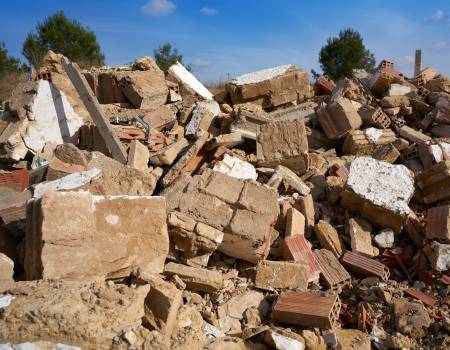
The UK construction industry has come a long way with its recycling/ reuse practices but, due to the overproduction and inefficient use of some materials, the sector is still one of the biggest contributors to waste.
Along with the environmental impact this has (i.e. adding to landfill), waste has clear financial implications for any company that doesn’t keep this issue in check. And, while some companies factor in the costs of waste from the beginning of any project, this method is not only self-defeating but increasingly unacceptable in terms of the global need for a more sustainable built environment.
Within the construction sector, the overarching solution is often described using the phrase ‘material efficiency’. This means:
“[The] process of undertaking a building project to enable the most efficient use of materials over the lifecycle of the building and its components. (Note: This includes using fewer materials, reusing existing demolition/ strip-out materials and, where appropriate, procuring materials with higher levels of recycled content. It also includes following the waste hierarchy to avoid and reduce waste wherever possible).”
BS 8895-1:2013
Sheriff Construction has an environmental policy which states our commitment to carbon reduction and effective waste management. We want that commitment to be properly put into practice so have identified some simple yet effective changes which can help to reduce construction wastage and/or allow more waste to be recycled. Here’s a guide to what you can do in relation to five of the most common materials we use on site:*
1. Bricks/ blocks
Brick and block wastage commonly arises from items that are damaged during unloading, problems with storage and cutting, and excess/ over ordering. Make a change by:
• Providing dedicated storage areas to reduce damage during storage.
• Planning, during the design stage, to minimise the need for cutting bricks and blocks.
• Separating brick and block waste to avoid damage and contamination.
• Using a lime-based mortar rather than a cement-based mortar – this allows the bricks to be recovered and reused at building deconstruction.
2. Floor and wall coverings
Whether it’s carpets, laminate, wallpaper or ceramic tiles, these item can all become waste if they are damaged during handling and storage, cut wrongly, over-ordered or incorrectly selected (thereby going unused). Make a change by:
• Reusing spare tiles or unfinished rolls of material at another project or returning them to the supplier wherever a take-back scheme exists.
• Selecting a protected, secure area for storage to reduce waste from water and accidental damage. Unused items or off-cuts should also be stored securely so they remain in good condition for reuse in later projects or kept by the client for replacements.
• Putting pollution prevention measures in place.
3. Insulation
The main causes of wastage for insulating materials like spray foam and fibreboard are overordering, ordering the wrong type or thickness of material, overdesigned projects, poor pre-formed design and bad storage/ handling. Make a change by:
• Separating insulation waste to avoid damage.
• Selecting a secure storage area to protect materials from accidental and weather damage and storing off-cuts and partially used rolls for reuse.
• Keeping accurate records to prevent over ordering and minimise stock held on site.
• Recovering materials and avoiding sending them to landfill wherever this is possible.
• Improving transport procedures to reduce damage to materials.
4. Plastic
From a distance, you might think a construction site has little in the way of plastic but look closer and unfortunately you’ll see it does not escape the planet’s plastic problem – making an appearance in pipework, window frames, scaffolding boards, flooring and of course packaging.
Packaging is one of the biggest causes of waste, not only due to building materials but also site workers’ personal items like food packaging. Other reasons for plastic waste include over specified project design, poor storage/ handling and disposal of cut-offs. Make a change by:
• Separating plastic waste made of different polymers to reduce contamination.
• Recovering materials and not sending to landfill.
• Improving transport procedures.
• Improving design – e.g. plastic pipe networks can be designed to use as few fittings as possible.
• Planning to use materials that come with zero-waste wrapping.
5. Wood
Among the main culprits of wood waste in construction are pallets, crates, beams, window/ door frames and fencing (including deconstructed materials, cut-offs and damaged goods). Make a change by:
• Allowing adequate time for waste management planning.
• Selecting a secure storage area to protect materials from accidental and weather damage.
• Separating wood waste to avoid contamination.
• Arranging appropriate transport for collection of waste (using recycling collections as much as possible).
Other ideas
Alongside the changes listed above, achieving material efficiency in construction relies on companies making sure their ordering processes accurately match project requirements (there is plenty of software that can help with this) and ensuring all site workers are properly trained in how to handle, store and dispose of all the materials they use.
There is also much that can be done in terms of incorporating more recycled materials into construction projects but we’ll take some time to look at that in another blog.
Meanwhile, if you have any ideas that you think would lead to better material efficiency/ waste reduction in construction, let us know. Leave your comments with us over on Facebookor LinkedIn.
Source: Information adapted from a ‘Recycling Construction Materials’ guide produced by NI Business Info.
28.01.2020








